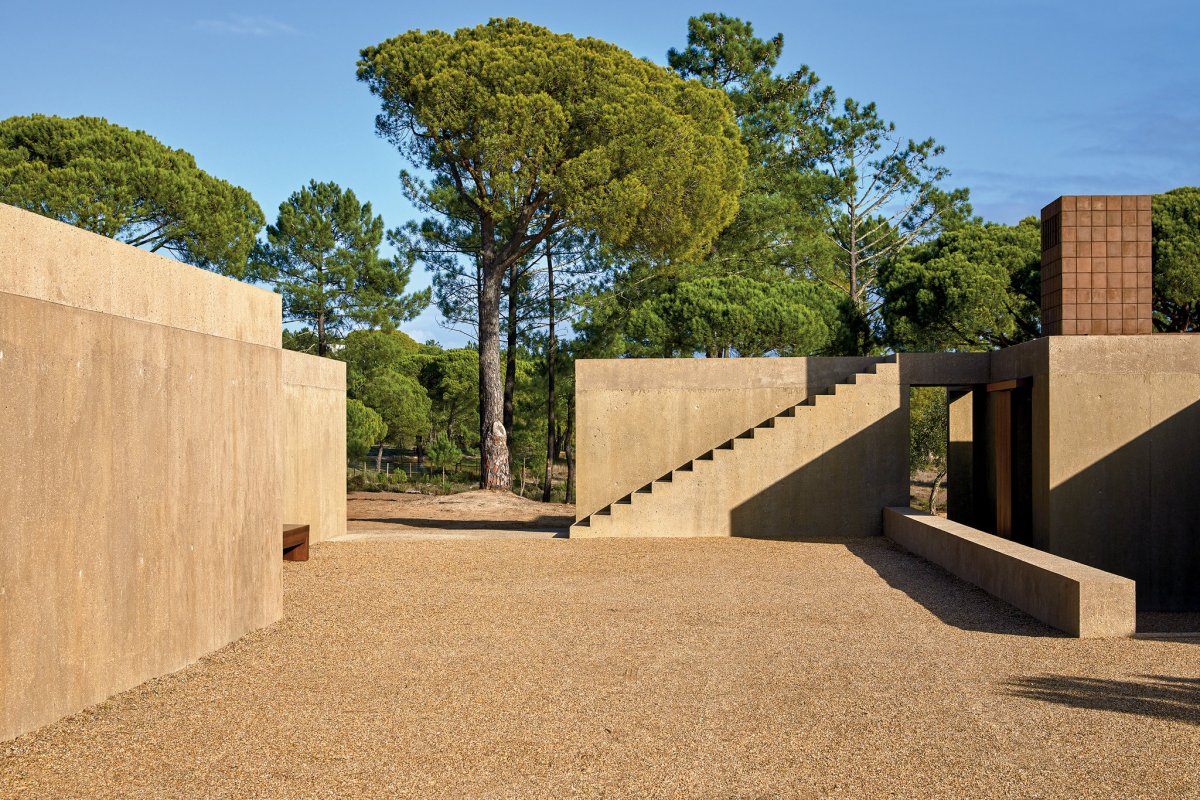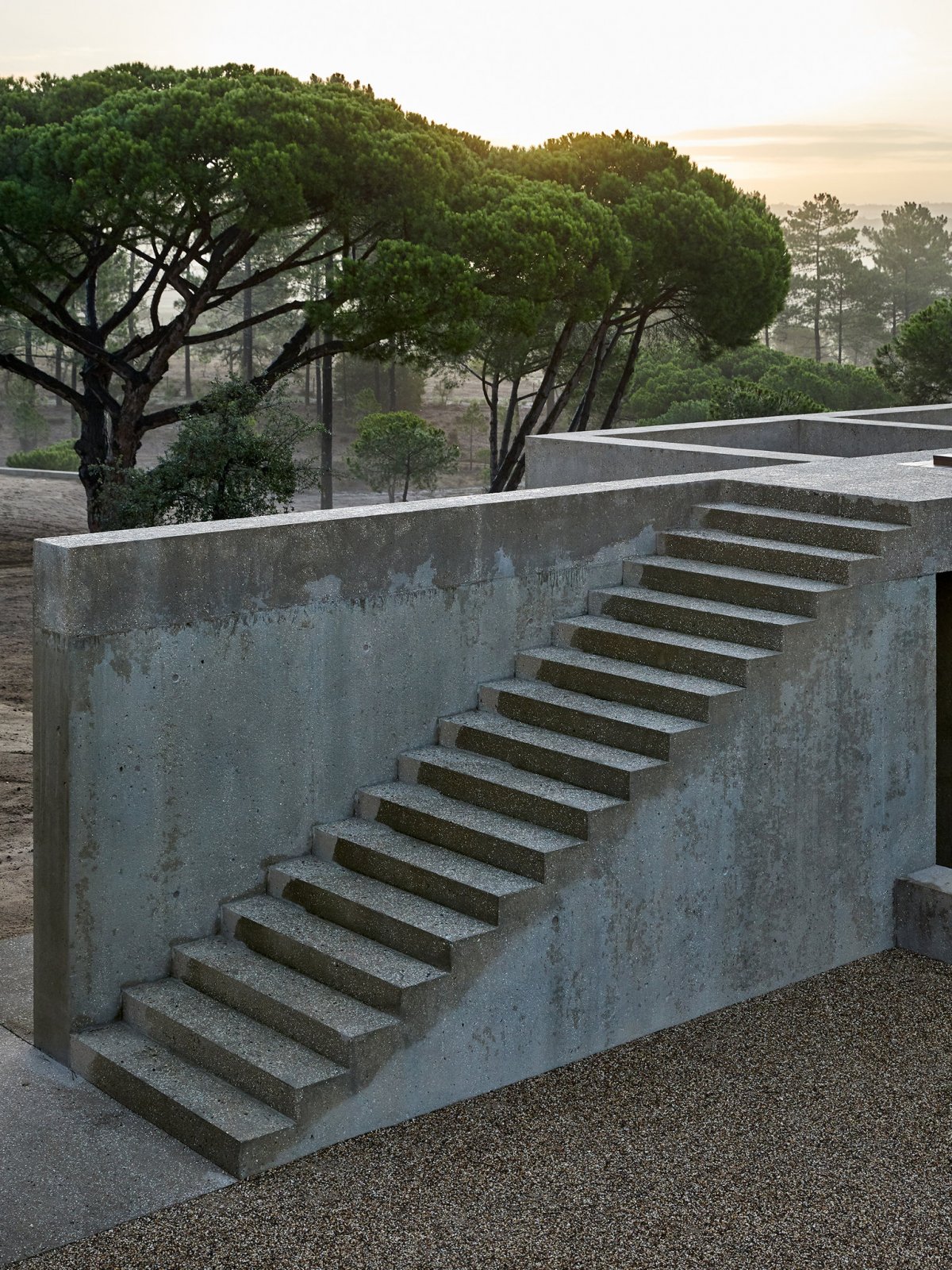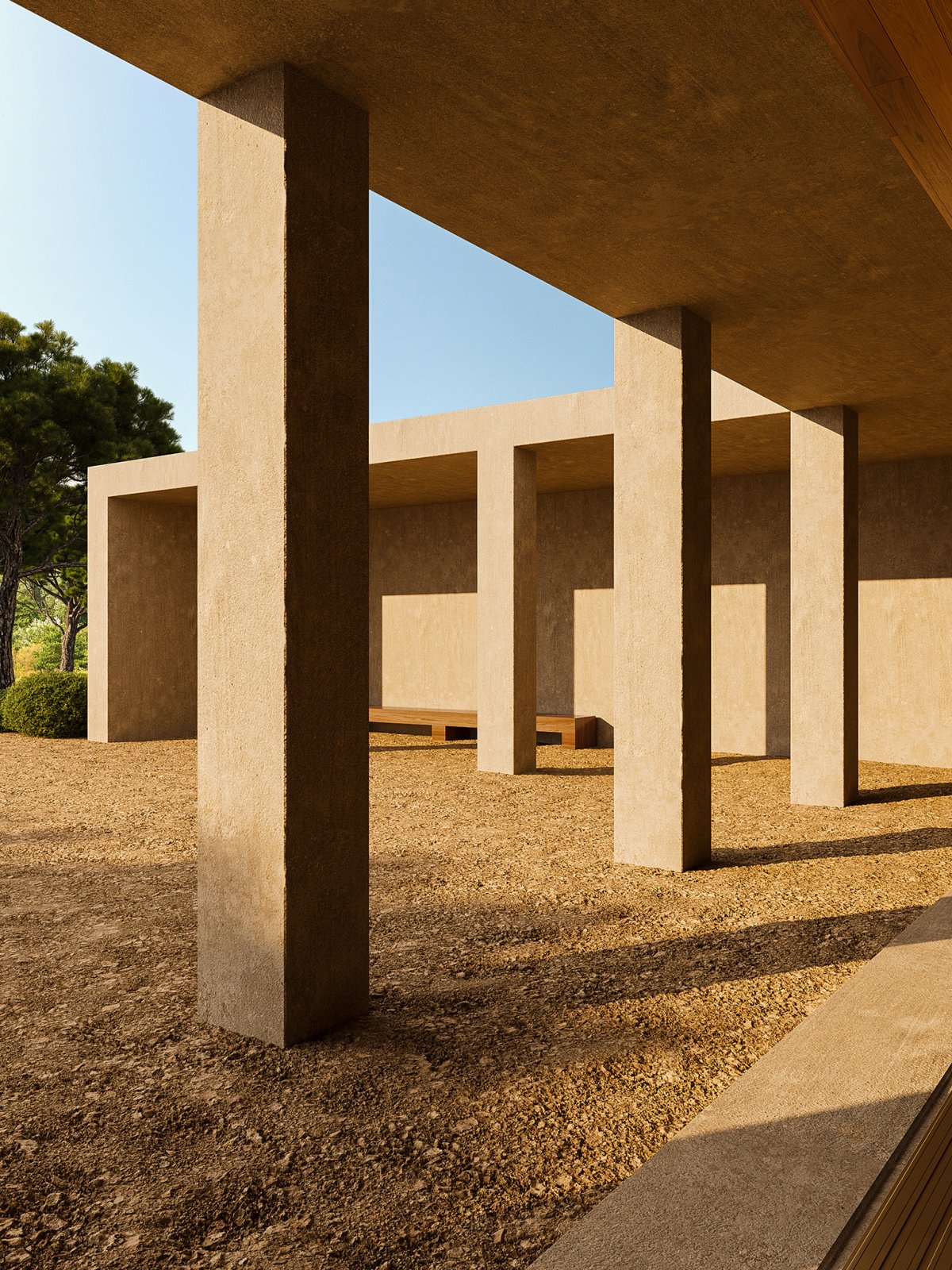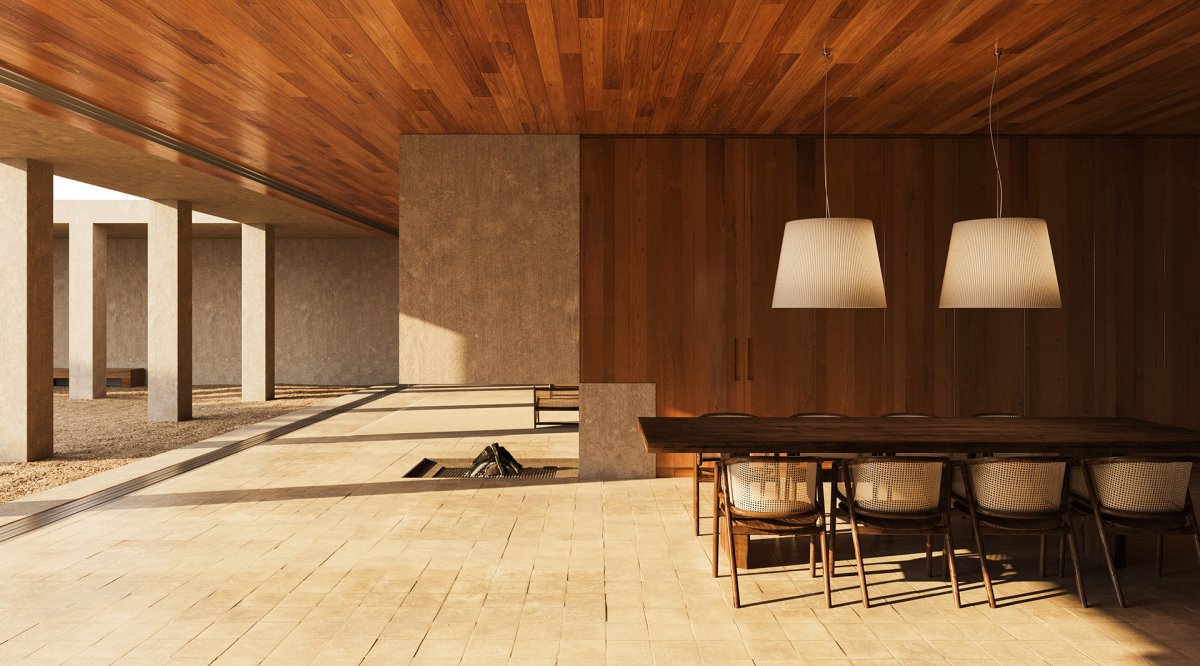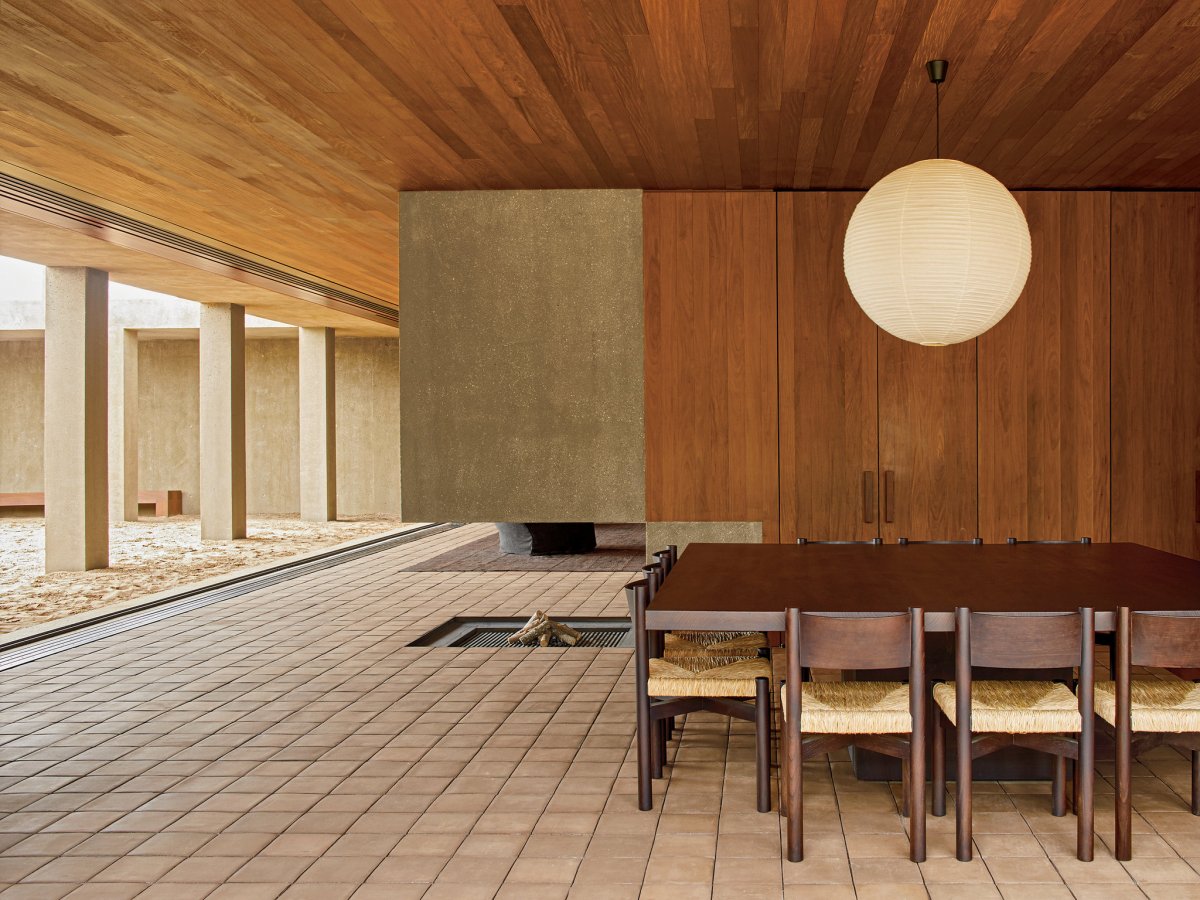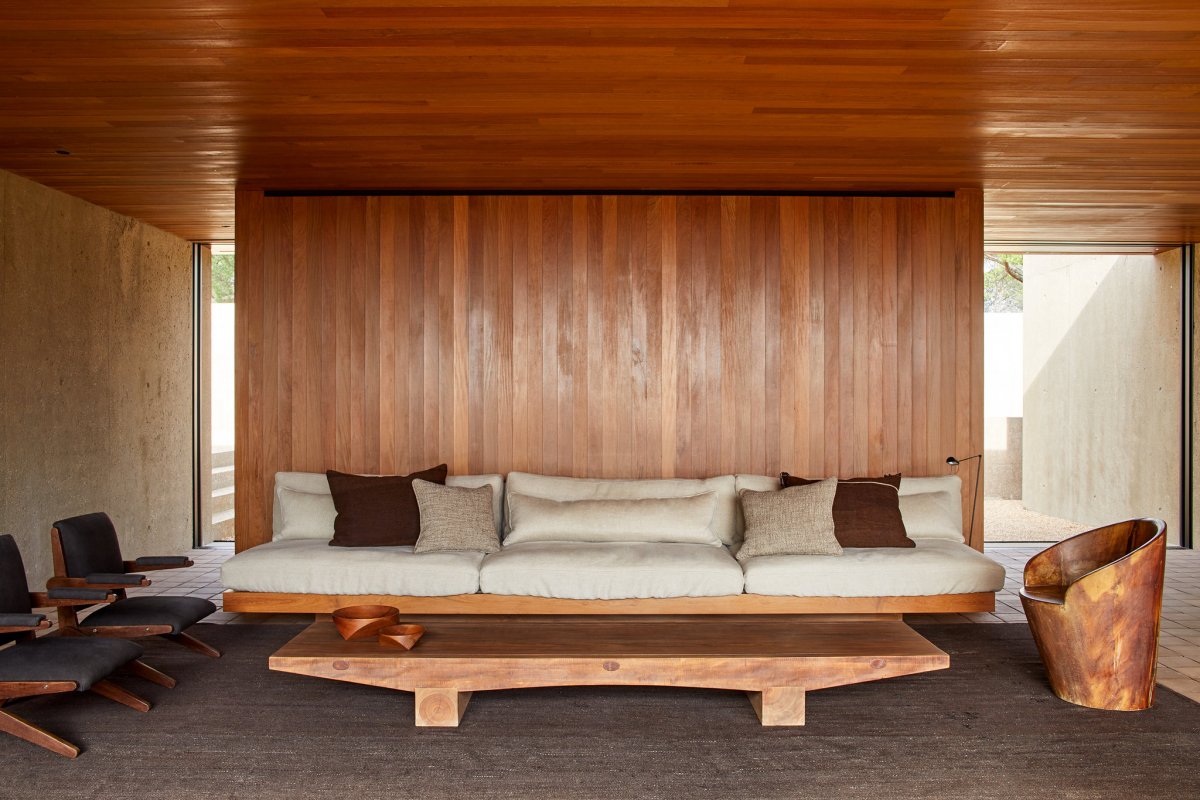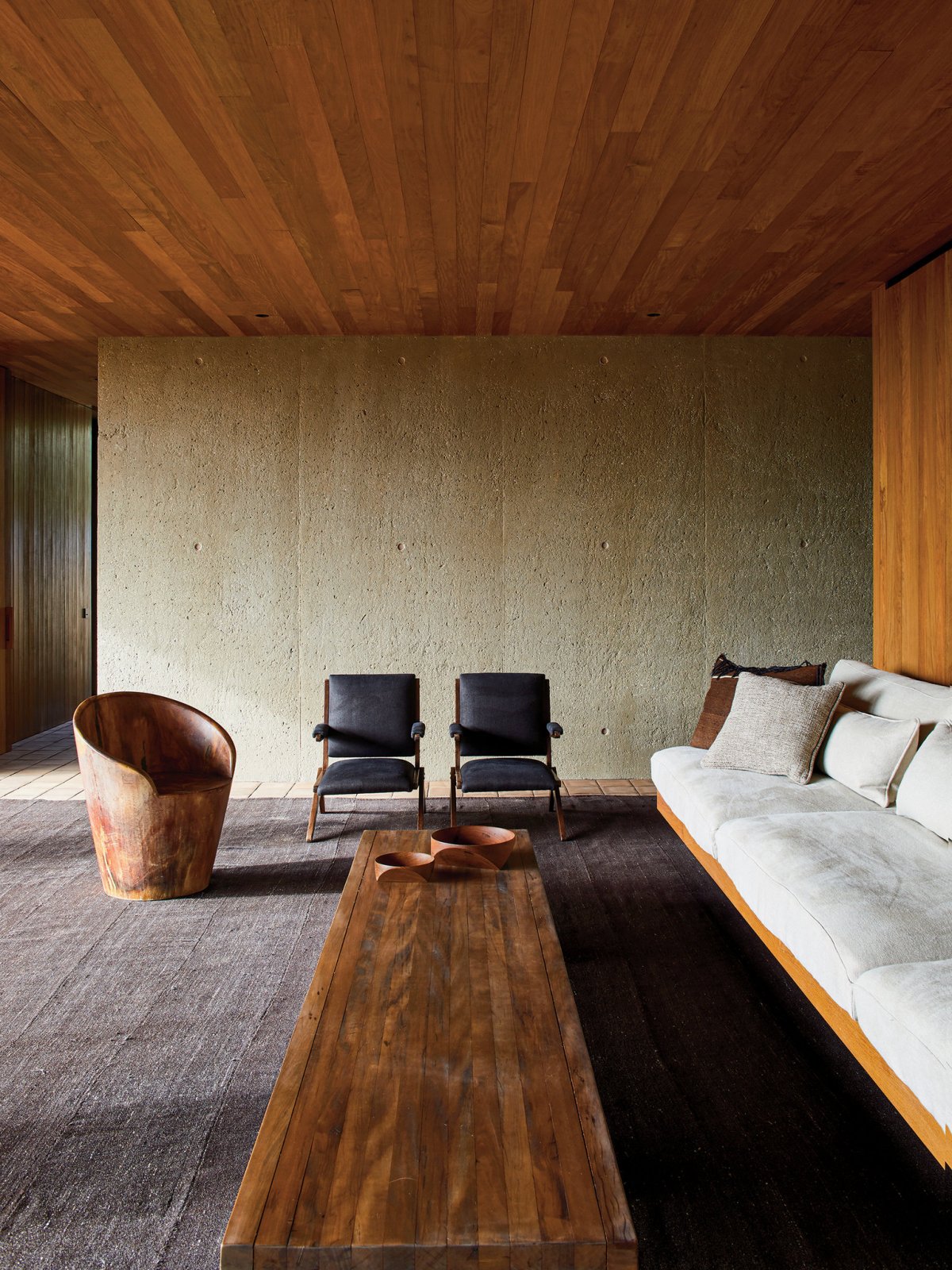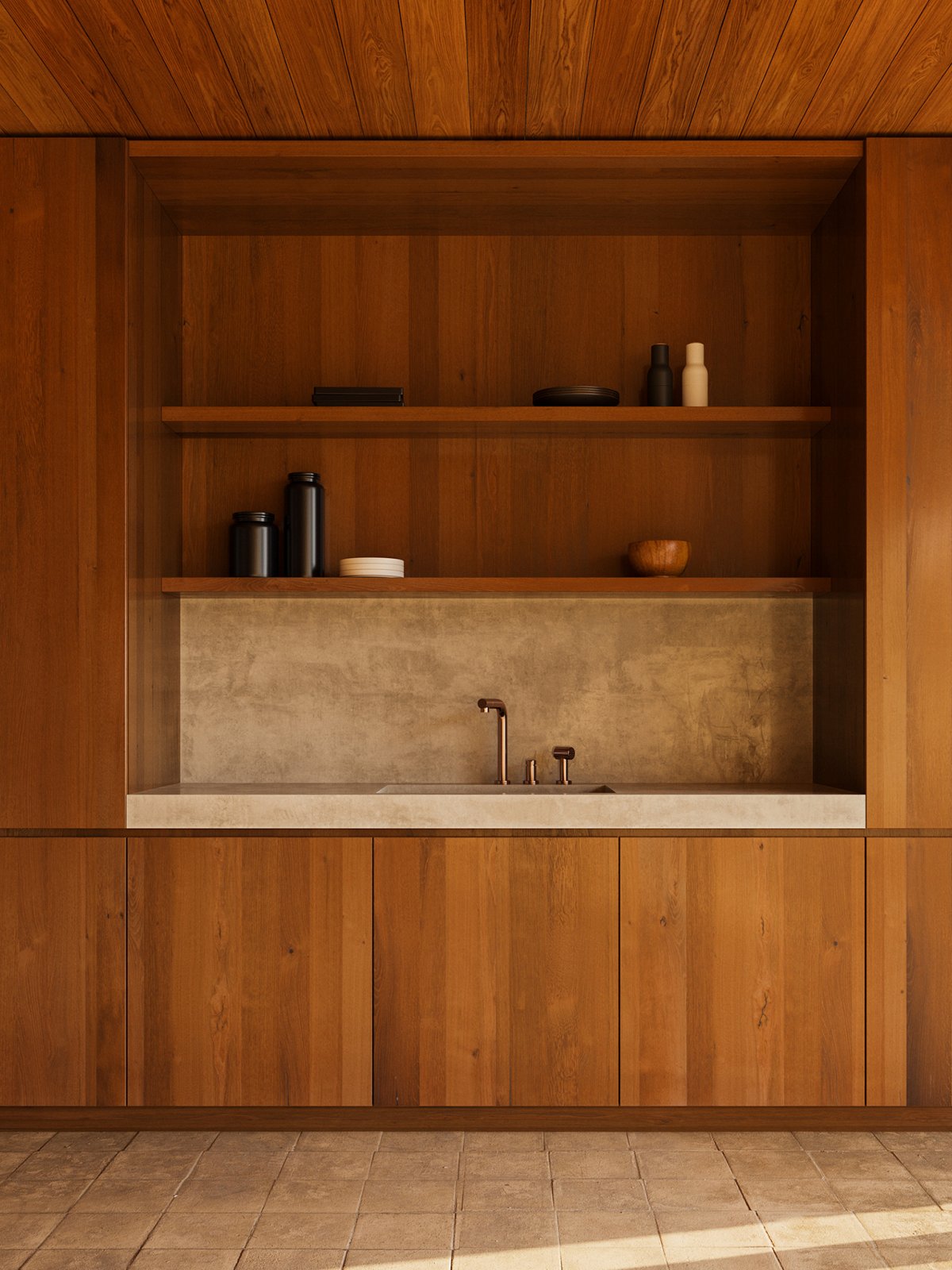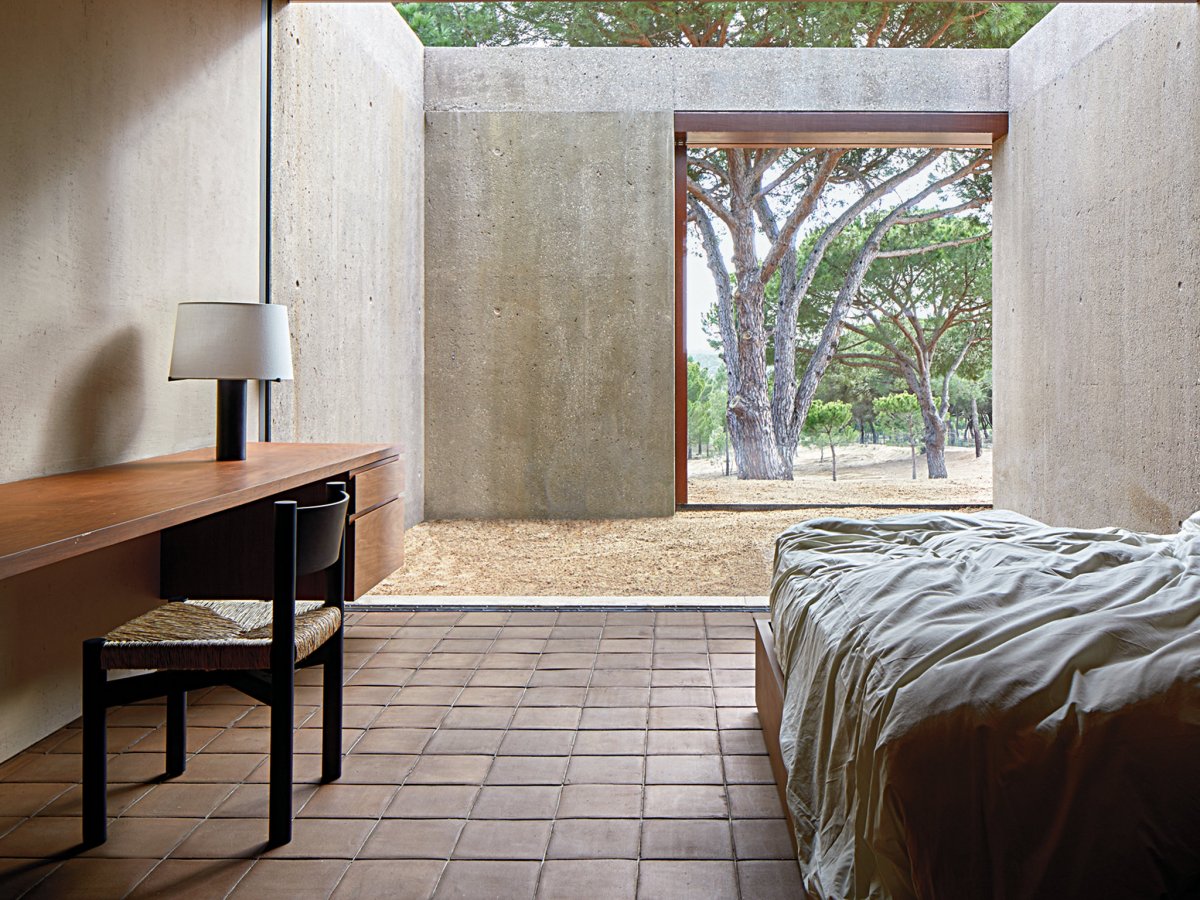
Casa M was a labor of love that took over three years to build in Melides, Portugal. The team behind its design together with Van Duysen, the actual client, sought to create an enduring monument to design – a sculptural oeuvre camouflaged by the rolling hills, dunes and cork trees of Alentejo, south of Lisbon, where flocks of storks hover high above it.
Drawing inspiration from iconic concrete residential structures by modernist masters such as Can Lis in Mallorca by Jørn Utzon, Casa Luis Barragán and Georgia O’Keefe’s Ghost Ranch, even Casa Malaparte in Capri, the ethereal, unobtrusive structure disappears into the surrounding forest dunes. Embodying Van Duysen’s stylistic aesthetics, the poured-on-site concrete volumes represent the purest expression of the texture-obsessed, materials-driven strain of warm brutalism that has defined the studio work for more than three decades.
Van Duysen’s search for stripped-down essentialism translates into a bare-bone structural language and space. As Van Duyen sees it, it’s a shrine, a sanctuary, a domus in which he feels protected yet inspired, lulled by an unspoiled vegetation, so typical of the area. It’s an argument for eliminating noise and clutter from one’s life, to receding (quite literally, in this case) into the natural environment.
Casa M’s architectural core is in a continuous dialogue with the outside where sand is allowed to be part of the house itself, blurring the distinctions between indoor and outdoor. The interiors, rendered in Brazilian ipe wood, brown terracotta tiles in a nod to the Portuguese tradition, and sparse furniture, reinforce how the warm Brutalist monolith is hard at its core but soft and welcoming in character. The colors of concrete and cork trees are actually reprised inside with each detail, from the wooden ceilings to fixtures and panels, all the way to custom-made furnishings. In the living quarters, a 11.8-meter glass sliding door, disappearing into the walls, opens onto the central columned space, riad-like, horizon and Ocean in the distance, only a little farther to grab.
- Architect: SIA Arquitectura
- Interiors: Vincent Van Duysen
- Photos: Ricardo Labougle Vincent Van Duysen

